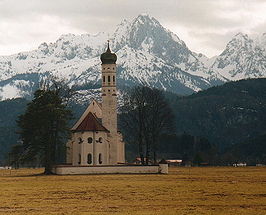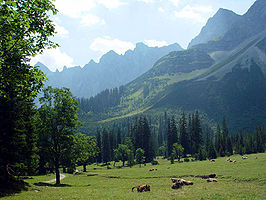| Pages |
|
|
|
|
|
|
|
|
|
|
|
|
|
|
|
|
|
|
|
|
|
|
|
|
|
|
|
|
|
|
|
|
|
|
|
|
|
|
|
|
|
|
|
|
|
|
|
|
|
|
|
|
|
|
|
|
|
|
|
|
|
|
|
|
|
|
|
|
|
|
|
|
|
|
|
|
|
|
|
|
|
|
|
|
|
|
|
|
|
|
|
|
|
|
|
|
|
|
|
|
|
|
|
|
|
|
|
|
|
|
|
|
|
|
|
|
|
|
|
|
|
|
|
|
|
|
|
|
|
|

|
|
|
|
| |
Bavarian Culture, Religion and Traditions |
|
| |
Culture
Due to their long independence (until 1871), Bavarians have always maintained a strong national identity. Some features of the Bavarian culture and mentality are remarkably distinct from the rest of Germany. A prevalent perception among other Germans is that Bavarians see Bavaria as the most important part of Germany. A German play on words lambasts the Bavarian sense of superiority. Its name in German, "Freistaat Bayern" means simply "the free state of Bavaria." However, many Germans sarcastically refer to Bavaria as "Frei statt Bayern" which literally means "Free instead of Bavaria," implying that Bavarians view themselves as a separate country, or at least culturally superior to the rest of Germany. Noteworthy differences (especially in rural areas, less significant in the major cities) can be found with respect to:
Religion

Bavarian church with Alps in the background
The predominant faith is Catholicism, particularly in the southern parts of Bavaria and Lower Franconia. As per the most recent available Kirchliche Statistik Eckdaten from the Deutsche Bischofskonferenz, Bavaria is one of two Bundesländer with a population that is in majority Catholic (in several additional Bundesländer, a relative majority of the population is Catholic). As per this source, in 2005 57.8 % of the Bavarian population was Catholic. Meanwhile, Lutheranism has a significant presence in large parts of Franconia. Religion remains important to many in the region, as expressed by the typical Bavarian and Austrian and Swabian greeting: "Grüß Gott!" (God bless you). The current pope, Benedict XVI (Joseph Alois Ratzinger), was born in Marktl am Inn in Upper Bavaria.
Attitude towards traditions

Though only a relatively small part belongs to the Alps, the perception of Bavaria as an alpine region endures.
Bavarians commonly emphasize pride in their traditions. Traditional costumes collectively known as Tracht are worn on special occasions and include Lederhosen for males and Dirndl for females. Century-old folk music is practiced and dialect songs and poems are taught in nursery schools. The Maibaum, or Maypole (which in the Middle Ages served as the community's yellow pages, as figurettes on the pole represent the trades of the village), and the bagpipes in the Upper Palatinate region bear witness to the ancient Celtic and Germanic remnants of cultural heritage of the region.
|
|
|
|
|
|
| |
There were 38562 visitors on this page... |
|
|
|
|
|
|
|